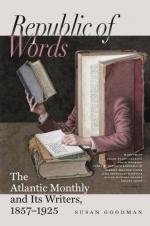We know not how the first view of a Christian spire would affect the mind of an alien; but so far as our own experiences are concerned, though perhaps familiar only with the lowliest and most unpretending of its kind, we are conscious that it deeply impressed even the “unsunned temper” of our childhood. The wisest among us may not be able to define precisely these impressions, or trace to their source the admiration and satisfaction it occasions, yet all are ready to acknowledge its beautiful fitness to adorn and glorify the Christian temple. But to the thoughtful mind how suggestive it is of pleasant imagery! It is “the silent finger” that points to heaven; it is an upward aspiration of the soul; a prayer from the depths of a troubled heart; a suspirium de profundis; a hymn of thanksgiving; a pure life, throwing of the worldly and approaching the ethereal; a finite mind searching, till lost in the vastness of the unknown and unapproachable; a beautiful attempt; a voice of praise sent up from the earth, till, like the soaring lark, it “becomes a sightless song.” Indeed, our unbidden thoughts, that wild-ivy of the mind, are trained upward by the spire, till it is hung round with the tenderest associations and recollections of all that is sweet and softening in our natures. Thus, when the painter has represented on his canvas some wild phase of scenery, where the gadding vine, the tangled underwood, the troubled brook, the black, frowning rock, the untamed savage growth of the forest,
“Old plash of rains and refuse patched with moss,”
impress us with awe, and a sad, homeless feeling, as if we were lost children, how eloquent is that last touch of his pencil that shows us a simple spire peeping over the tree-tops! How it comforts us! How it brings us home again, and bestows an air
“Of sweet civility on rustic wilds”!
But even if we were not inclined to be sentimental on the subject, even if base utilities had crowded out from our hearts the blessed capacity of shedding rosy light on things about us, the coldest esteem could not but ripen into affection, when we reflected that the spire never adorned the shrine of a pagan god, never glorified the mosque of a false prophet, never, in purity, arose from any unconsecrated ground; but when, at last, the Church of Christ felt the “beauty of holiness,” then it developed out of that beauty and pointed the way to God. It exhaled from the growing perfection of the Church, as fragrance from an opening flower. It is, therefore, peculiarly holy. It is a monitor of especial grace. “It marshals us the way that we are going,” like the visionary dagger of Macbeth; but the knell that sounds beneath it summons only to heaven.




